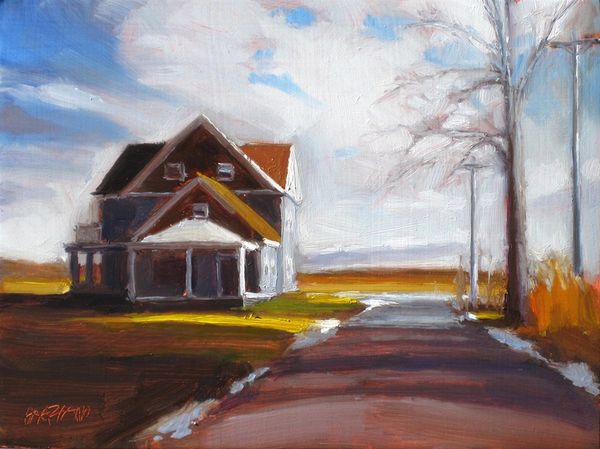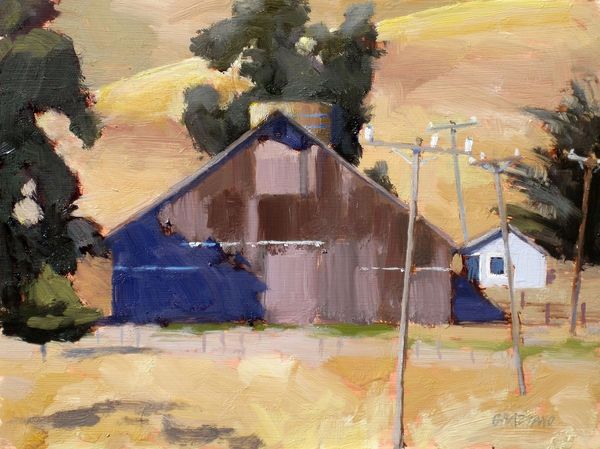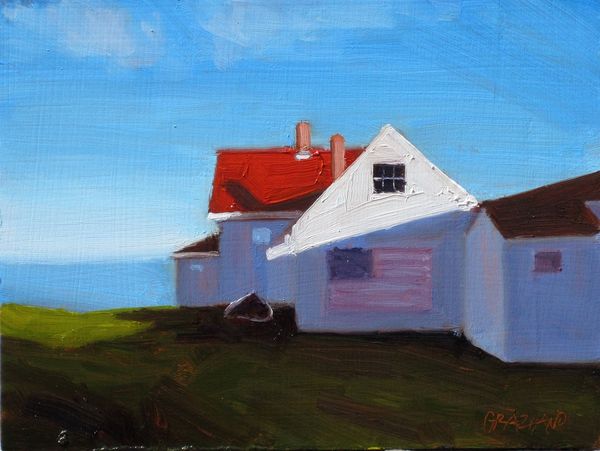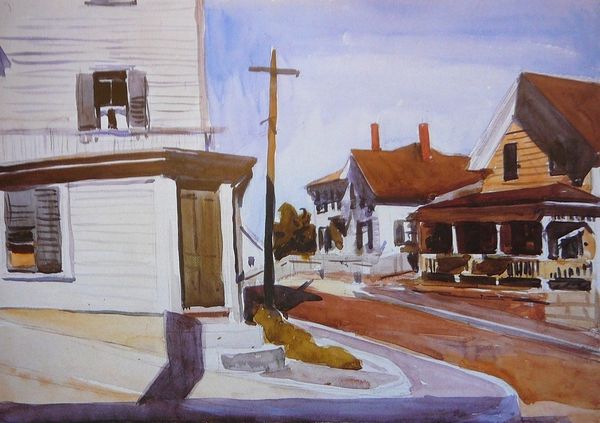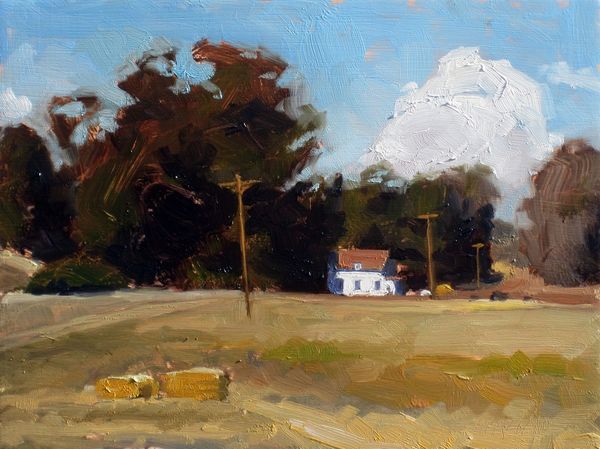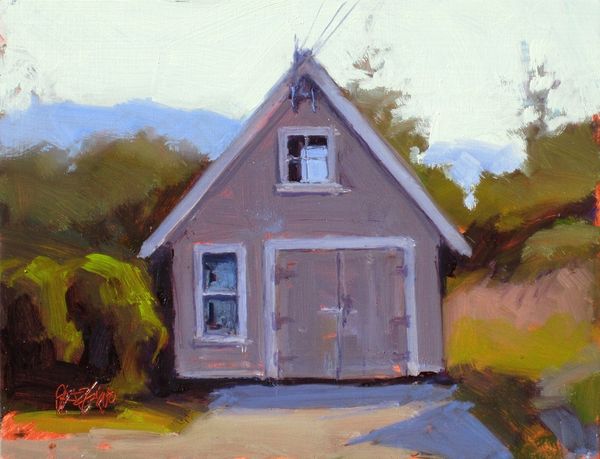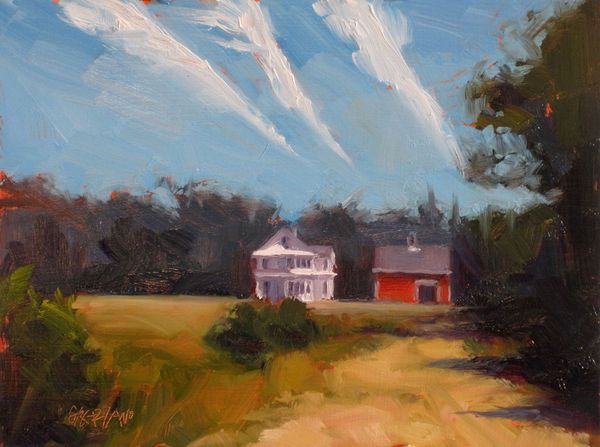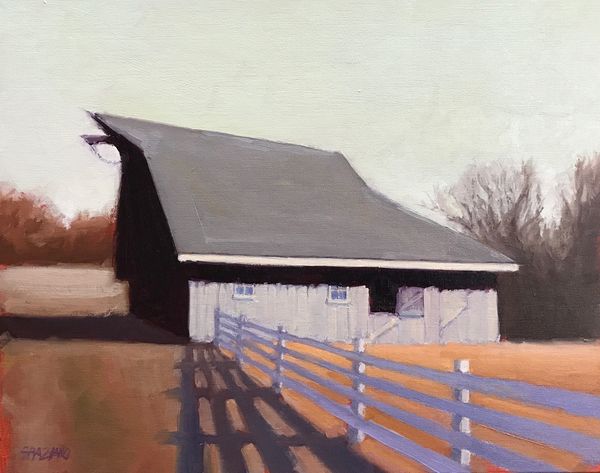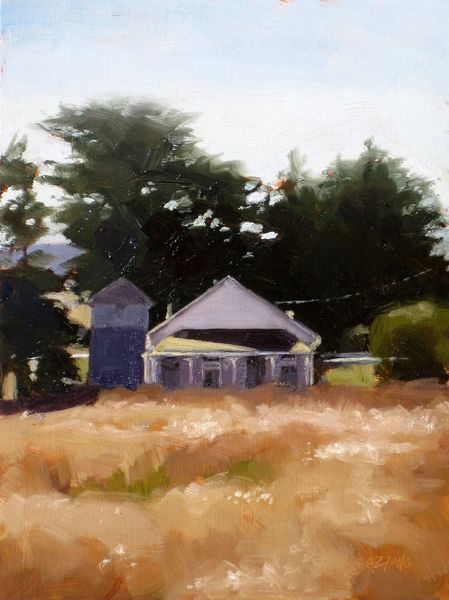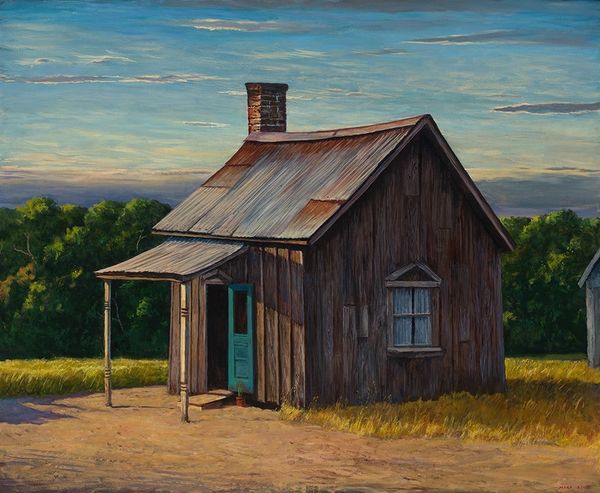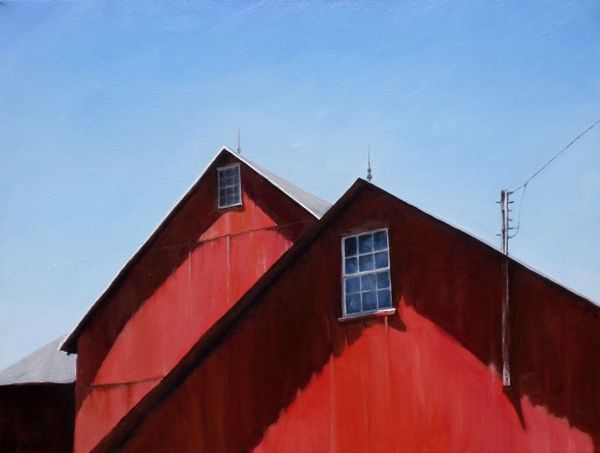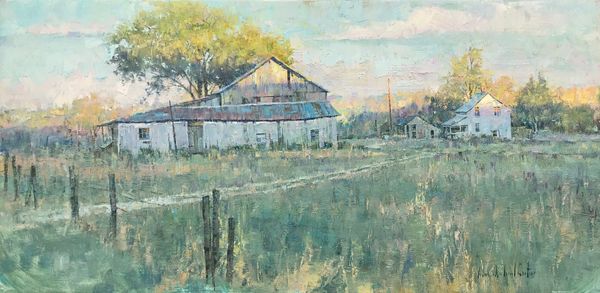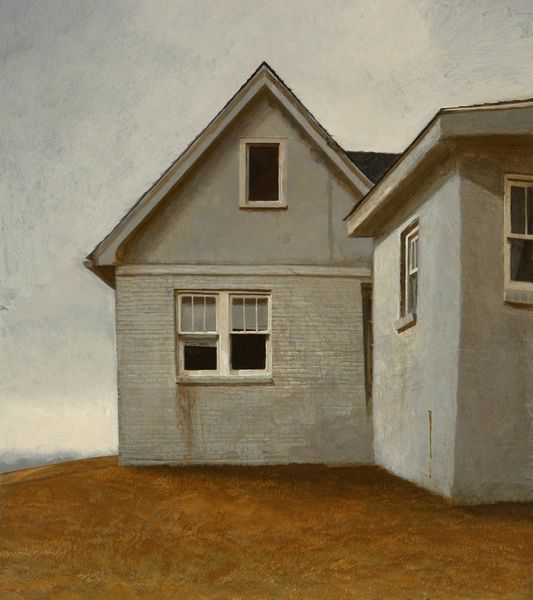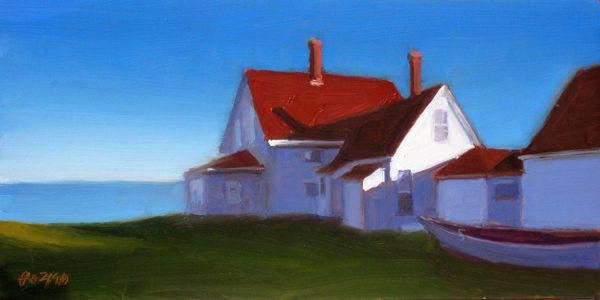
painting, plein-air, oil-paint
#
painting
#
plein-air
#
oil-paint
#
landscape
#
oil painting
#
genre-painting
#
realism
Copyright: Modern Artists: Artvee
Curator: What strikes me first about this image is the overall subdued color palette, the ochre and blues give it a very distinct temporal quality, doesn't it? Editor: It does. This painting, entitled "Spring Thaw," uses oil paint and appears to capture a fleeting moment in a landscape. While its specific date is unknown, the work can be characterized as adhering to principles within realism and plein-air techniques, capturing the observed moment from life. Curator: The dilapidated barn set atop the hill certainly communicates notions of rural poverty. I see in it not just an aesthetic rendition but a representation of socio-economic disparities that echo the broader cultural landscapes of marginalized communities in post-industrial eras. The scene also captures a feeling of American nostalgia and possibly decline? Editor: Indeed. If you focus on composition, the structure itself is divided horizontally; the earth and the structure contrast against the lighter blue hues in the sky, providing not only formal contrast but symbolic of grounded structures that, in their aged state, remind us of a historical depth often unseen at the forefront of consciousness. The telephone poles, though formally unremarkable, are structural interventions, slicing up that big blue sky! Curator: Agreed! The telephone poles contribute to an interesting tension, positioning modernity against an agrarian setting, subtly questioning industrial expansion into rural landscapes. Do you consider this critique to be passive or more provocative in its statement? Editor: Passive is certainly the key. Graziano isn't making a big splash. The fence on the edge of the road provides a framing point, a division that's representative of property ownership and serves as a boundary and sets the horizon line while drawing your attention to the buildings beyond. Curator: To me, this invites discussions of environmental ethics and land rights, perhaps offering viewers a chance to contemplate how technological advancement has irreversibly changed these community infrastructures and their relationship to ownership. Editor: So we both see in the buildings and the layout some subtle political statement. The canvas presents a tableau which is open to social critique, not simply as an aesthetic exercise but engaging wider, relevant discourses on how landscape paintings also represent something larger. Curator: Exactly, seeing beyond the colors to their symbolic implications changes how one perceives a common countryside scene and really heightens an experience of both reflection and engagement. Thanks for taking the time to discuss this landscape.
Comments
No comments
Be the first to comment and join the conversation on the ultimate creative platform.
